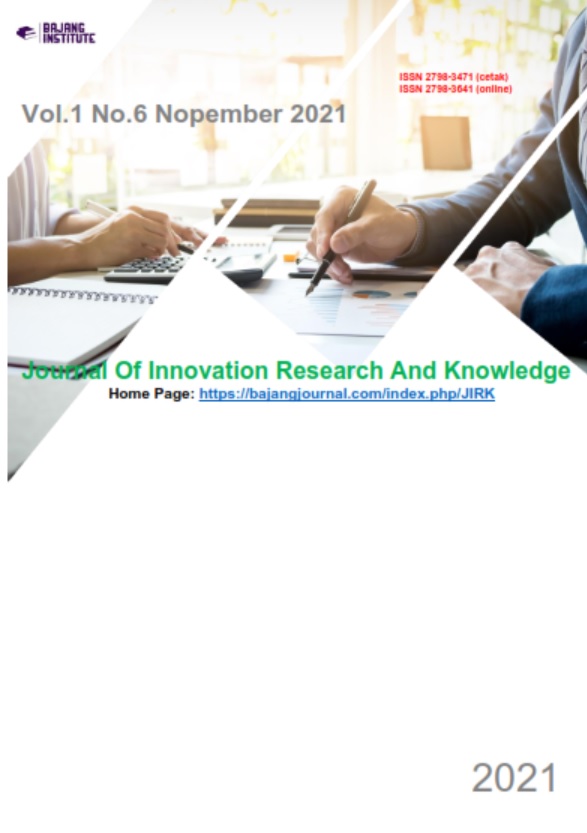DIFFERENCES IN FOLKLORE BETWEEN SANGKURIANG (INDONESIA) AND THE OEDIPUS (GREECE) (A COMPARATIVE STUDY)
DOI:
https://doi.org/10.53625/jirk.v1i6.631Keywords:
Universitas HasanuddinAbstract
Every country has its own folklores, whether they are true stories or just fairy tales. The world consists of folklore from a different country but has a similar folklore story. One of them is Sangkuriang a folklore from Indonesia and The Oedipus Greece. This study aims to determine how the similarities and differences of the two folklores are. In analyzing this research, the author uses two approaches. The first is Greimas’ structural theory to analyze the structure of the folklore. And the second is a literary comparison approach. The result of this study indicated that there was both similarities and differences of story structure. There are similarities and differences in the structure of the story between Sangkuriang and The Oedipus. However, both not influence and influenced by another, because Sangkuriang represented of his own country, likewise of The Oedipus.
References
Amos, D. B. (1972). Toward a Definition of Folklore in Context. P. 13. The Journal of American Folklore.
Bascom, W.R. (1954). The Journal of American Folklore. Publish: American Folklore Society Rahma(2019).https;//www.jstor.org/stable/i2235959.
Basnett, S. (1993). Comparative Literature: A Critical Introduction. Wiley-Blackwell. ISBN: 1978-0-6331-16705.
Buckley, J. (2010) The Story of Oedipus. www.thepilosophyman.com
Brunvand, J, H. (1978). The Study of American Folklore: An Introductio, 2nd edition. New York: W.W. Norton.
Darojat, S.M and et all (2019). The Education Value "Ki Bodronolo" Folklore. The Study program of Indonesian Langauge Education, Sebelas Maret University, indonesia. htttp://dx.doi.org/10.1841/ijmmu.v6i2.730.
Danandjaja, J. (1991). Folklor Indonesia: Ilmu gosip, dongeng, dan lainlain. Jakarta: Pustaka Utama Grafiti.
Eslit, E, R. (2013) Folk Literature. DOI: 10.13140/RG.2.2.19295.15527.
Fludernik, M. (2006). An Introduction to Narratology. New York: Routledge.Save the world versus man-made disaster.
Glass, G.V & Hopkins, K. D. (1984). Statistical Methods in Education and Psychology, 2nd Edition. Engleweood Cliffs, NJ: Prentice-Hall.
Hanitzch, T. (2009) Comparative Journalism Studies. In karin, Wahly Jorgensen and Hanitzh Thomas. The Handbook of Journalism SStudies , New York/ London. Routtledge, Taylor and Francis Group.
Magdalenic, S. 2008. Encyclopedia of Violence, Peace, and Conflict. 2nd Edition.
Poley, J. (1978) American Folklore and legend. New York: The Reader's Digest Association, Inc.
Prince, G. (2013). A Dictionary of Narratology. Lincoln: U of Nebraska P.
Rene, W and Austin, W. (1956). TheorY of Literature . New York: Harcourt, Brace and Company.
Razali. (1996). Sastra Bandingan: Ruang Lingkup dan Metode. USU Press.
Sandberg, T. (2019). The Differences Approach to Narrative Fiction: A Recurring Critique of Narratology and Its Implication for The Study of Novels and Short Stories. Publisher: Örebro University. www.oru.se/publikationar. ISSN 1650-5840
Yektiningtyas, W. (2019). Igniting Folktales as Children’s Learning Sources in Sentani Jayapura Papua. Litera, 18 (1). Universitas Cenderawasih Jayapura PAPUA, Indonesia













